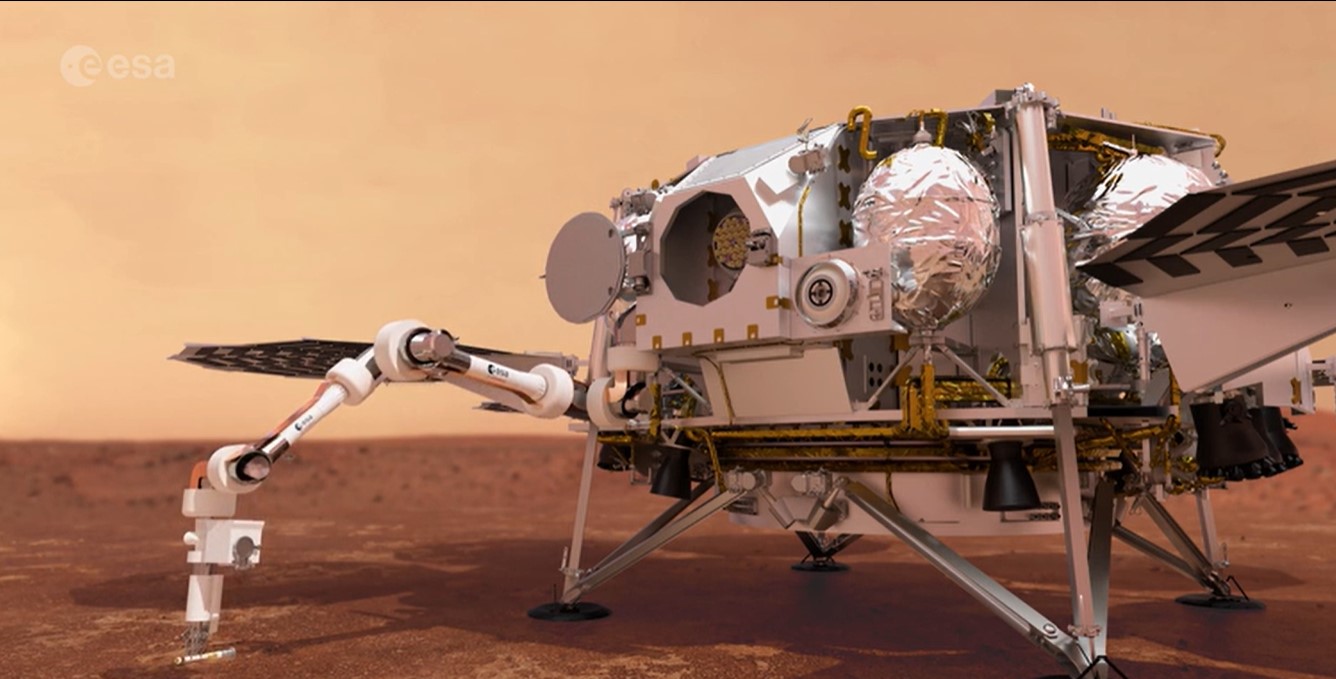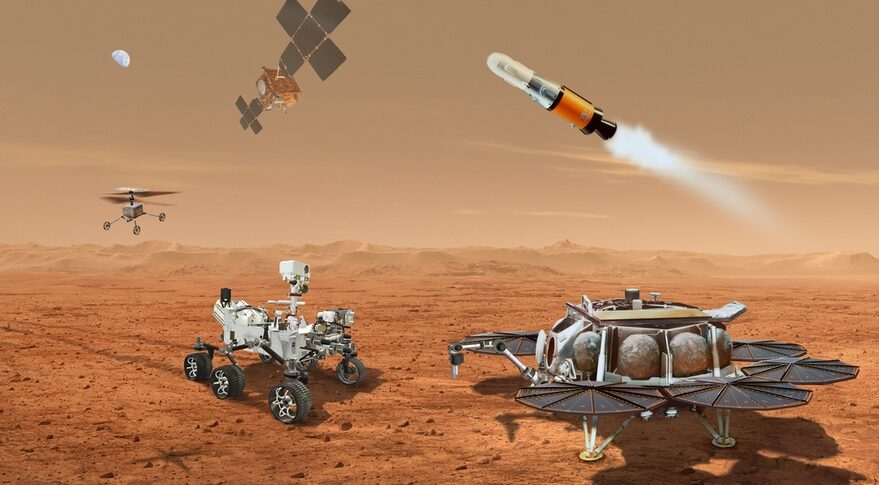Now that the Perseverance rover has dropped off ten regolith and rock sample tubes for a future sample return mission to retrieve, the plans for such a mission are coming together. The mission is a joint venture between NASA and the European Space Agency, and ESA has agreed to build a 2.5-meter-long robotic arm to pick up tubes and then transfer them to a rocket for the first-ever Mars samples to be brought to Earth.

ESA says the Sample Transfer Arm (STA) will likely be autonomous, with a large range of movements and seven degrees of freedom. Cameras and sensors will assist the arm, which will have a hand-like gripper to handle the sample tubes. Perseverance has brought to Mars 43 6-inch-long (15.2 centimeters) titanium tubes.
The entire architecture for the sample return mission is not yet final, but it is surely one of the most ambitious missions ever attempted.
There will likely be a Mars orbiter that will send a lander to the planet’s surface. It will touch down somewhere near the Perseverance rover, and if Perseverance is still functioning and mobile, the rover itself could bring the samples to the lander. If the lander could set down close enough to some of the sample tubes, it might be able to reach them itself, but that seems quite ambitious and risky.

Helicopters, too
With the success of the Ingenuity helicopter – which has now made 40 flights on Mars — NASA has suggested sending along two small helicopters similar to Ingenuity, except the new helicopters would have small robotic arms. The helicopters would go retrieve sample tubes, pick them up with the robotic arms and then bring them to the lander.
ESA says the STA’s autonomous abilities would allow it to “see” the sample tubes, allowing it to either pick up the tubes from the ground (where the rover has now left them in Jezero Crater) or extract the tubes from Perseverance, or perhaps the helicopters.

The plan is for a sample return container to blast off with a small rocket from the surface of Mars and rendezvous with ESA’s Earth Return Orbiter (ERO), which will leave orbit and bring the materials back to Earth.
Almost all of this plan has never been done before, so again, this is very ambitious. The goal is for the Martian samples to be back on Earth by 2033.
You can read more about ESA’s plans and contributions to the sample return mission at their blog, To Mars and Back.
Source: www.universetoday.com





